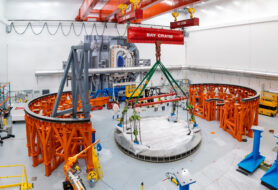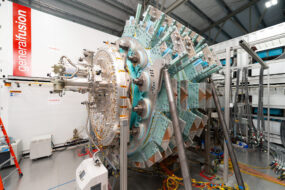The past year has been a big one for the fusion sector. It was a huge year for fundraising, with more than $2B in investor dollars flowing into the sector, and for regulatory development, with US regulators making rules to ensure that fusion tech is ultimately treated differently than reactors on the other side of the atom.
Drumroll, please…this morning, we released our State of Fusion report. The report dives into the fusion sector’s history, technology, and opportunities this year. It’s a tool for new entrants, investors, and seasoned pros alike to understand the big picture of fusion development as it stands today.
Indulge us in quoting ourselves in a moment of optimism: “If fusion lives up to its promise, it offers an extraordinary, once-in-a-generation opportunity to reshape the world’s energy future—and investors stand to benefit profoundly.”
If you’re looking for a sneak preview, you’re in the right place.
Choose a path: Generating power from a fusion machine is not easy to achieve by any means. To induce a fusion reaction, operators must create extreme conditions at hundreds of millions of degrees Celsius and often must work out how to confine plasma—an endeavor that’s been described as trying to confine Jell-O with a rubber band.
The commercial sector is throwing everything it’s got at developing a working and efficient fusion system. To get there, companies are taking a variety of approaches:
- Magnetic confinement, where plasmas are confined with powerful magnetic fields, like in tokamaks and stellarators.
- Inertial confinement, which uses high-powered lasers or energy drivers to compress fuel and induce a fusion reaction.
- Mixed-and-matched approaches, i.e., magneto-inertial confinement, which use aspects of both categories in their designs.
Making it happen: After ~75 years of pursuing fusion energy (and lest we forget the age-old adage that fusion power is always 10 years away), the stars seem to be aligning for fusion development that’s sustainable and even commercially viable.
- Investor interest is high, with the past several years seeing billions of dollars funneled into fusion tech by private investors—occasionally in mega-rounds like those into Commonwealth Fusion Systems in 2021 and Pacific Fusion last year.
- Scientific knowledge, like how plasmas behave, and advances in supporting technologies, like real-time data analysis and superconducting, are finally catching up with the theoretical needs of fusion plants.
- Regulatory regimes have been developed in the US to address fusion reactors under a different and simpler process than the fission sector faces. This bolsters confidence that working fusion reactors will ultimately have a path to adoption.
There’s a lot more where that came from. The full report is available to view here.
Lead Reporter of Ignition





